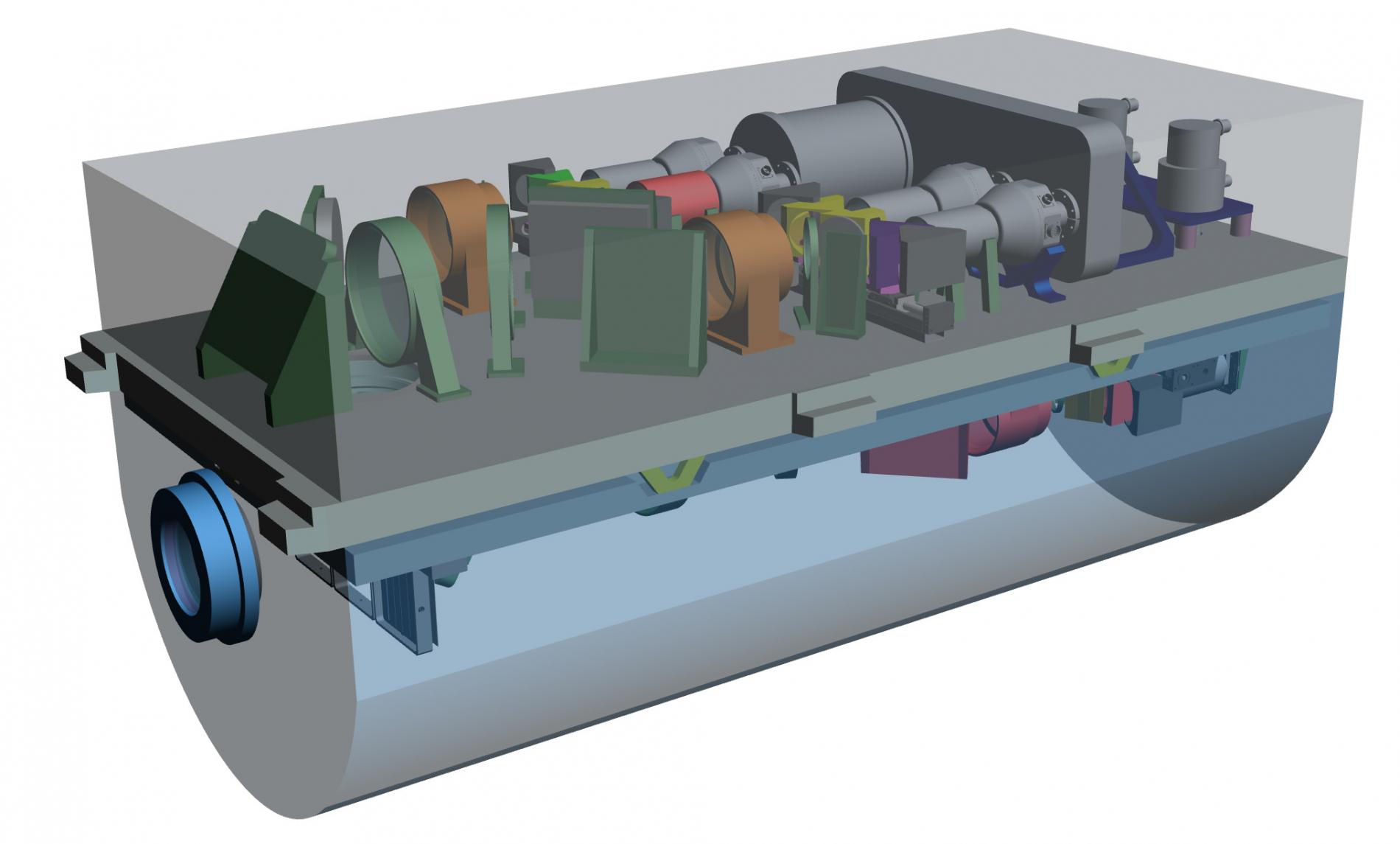OCTOCAM, a project lead by IAA astronomers, will be the next facility instrument of the Gemini observatory
The twin Gemini telescopes, one of the most competitive observatories in the world, consists of two 8.1m telescopes in Hawaii and Chile. OCTOCAM will multiply the power of Gemini South by simultaneously observing in eight different bands
The twin telescopes of the Gemini observatory, each with a diameter of 8.1m, are placed in both hemispheres, Gemini South in Chile and Gemini North in Hawaii and have privileged access to the skies. In 2014, Gemini issued a call for feasibility studies of a future instrument that would maintain the excellence of the observatory into the next decade. Among the selected teams was OCTOCAM, an ambitious project lead by researchers from the HETH group (High Energy Transients and their Hosts) from the Instituto de Astrofísica of Andalucía (IAA-CSIC).
After the feasibility study, OCTOCAM participated in the final call for proposals of the new facility instrument, in August 2016. After a thorough evaluaion it was selected for construction and funded with a total budget of 15 million USD in a contract that was signed last week.
“OCTOCAM has been designed to revolutionize the research in many fields of astrophysics. To achieve this, a large, international group of scientists determined the key science questions to be addressed in the coming decade and those were used subsequently to define the technical characteristics that will allow OCTOCAM to answer them”, says Antonio de Ugarte Postigo, scientist at IAA-CSIC and principal investigator of the project.
OCTOCAM will use eight state-of-the-art detectors to simultaneously observe at optical and infrared wavelengths, which have readout speeds of only several tens of milliseconds. These characteristics, together with its exceptional sensitivity, makes it a unique, unparalleled instrument that is capable of multiplying the collecting power of the telescope by a factor of eight.

Although the instrument was designed to satisfy the needs of many research subjects, OCTOCAM is optimized for the study of transients: very energetic and often very distant events such as gamma-ray bursts and supernovae. “The temporal resolution of OCTOCAM will allow us to study the explosion of a star at the end of its life and the formation of a black hole in slow motion”, explains Christina Thöne (IAA-CSIC), Project Manager of the Spanish node of the project.
OCTOCAM will be installed at the Gemini South telescope in Chile and it will support the LSST (Large Synoptic Survey Telescope), a telescope that aims at detecting thousands of transients each night. OCTOCAM will deliver a privileged view on different types of supernovae and their progenitors and reveal the complicated physics behind those explosions. Furthermore, OCTOCAM will facilitate studies regarding the formation and evolution of neutron stars and black holes, and it allows astronomers to study gamma-ray bursts, a unique tool for the exploration of the Universe at the time when the first stars were just being formed.
OCTOCAM also has the potential to contribute to other subfields of astrophysics: It can indentify and characterize planets around other stars via the transient method and study the interiors of stars by analyzing stellar oscillations. It will also trace the history of the solar system by observing trans-Neptunian objects, and study the chemical evolution of galaxies.
The instrument, to be delivered in 2022, has been coordinated from the Instituto de Astrofisica de Andalucia (IAA-CSIC) by Antonio de Ugarte Postigo and Christina Thöne in collaboration with Southwest Research Institute (SwRI, Texas), George Washington University (GWU, Washington D.C.) and FRACTAL S.R.L (Madrid). “We want this project to be a tribute to our colleague Javier Gorosabel who died in 2015 and was one of the initiators of the first OCTOCAM concept”, concludes Antonio de Ugarte Postigo (IAA-CSIC).
ABOUT THE GEMINI OBSERVATORY
The Gemini Observatory is an international collaboration with two identical 8-meter telescopes. The Frederick C. Gillett Gemini Telescope is located on Mauna Kea, Hawai'i (Gemini North) and the other telescope on Cerro Pachón in central Chile (Gemini South); together the twin telescopes provide full coverage over both hemispheres of the sky. The telescopes incorporate technologies that allow large, relatively thin mirrors, under active control, to collect and focus both visible and infrared radiation from space.
The Gemini Observatory provides the astronomical communities in seven partner countries with state-of-the-art astronomical facilities that allocate observing time in proportion to each country's contribution. In addition to financial support, each country also contributes significant scientific and technical resources. The national research agencies that form the Gemini partnership include: the US National Science Foundation (NSF), the UK Science and Technology Facilities Council (STFC), the Canadian National Research Council (NRC), the Chilean Comisión Nacional de Investigación Cientifica y Tecnológica (CONICYT), the Australian Research Council (ARC), the Argentinean Consejo Nacional de Investigaciones Científicas y Técnicas (CONICET) and the Brazilian Conselho Nacional de Desenvolvimento Científico e Tecnológico CNPq). The observatory is managed by the Association of Universities for Research in Astronomy, Inc. (AURA) under a cooperative agreement with the NSF. The NSF also serves as the executive agency for the international partnership.
Instituto de Astrofísica de Andalucía (IAA-CSIC)
Unidad de Divulgación y Comunicación
Silbia López de Lacalle - sll[arroba]iaa.es - 958230532
http://www.iaa.es
http://www-divulgacion.iaa.es

